The Flying Mole DAD-M100 pro HT monoblock amplifiers
| The Flying Mole DAD-M100 pro HT monoblock amplifiers |
|
The Miraculous Miniature Digital Amplifier |
|
February 2004
|
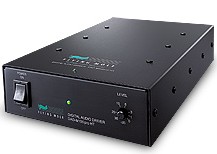
Looks as if 2004’s going to be The Year of the Digital Amplifier. The last time I counted, there were nearly a half-dozen digitally designed amplifiers burning in nicely in my dining room. With each touting a unique design concept, circuit topology, and sonic signature, they all have one thing in common—they all sound like single-ended triodes on steroids. In terms of dollars per watt, all are affordable, which should serve as a breath of fresh air for folks on real budgets, in particular, and the industry in general. Of all the group’s models, the 500-watt dual-golden-chassis Chateau Research Anaco MK II stands out as the most attractive, while the Acoustic Signature appears the most exotic. But if there were a category for Unbelievable, my choice would be the Flying Mole DAD-M100 22-ounce monoblock amplifiers. That’s no typo either. Here you’ve got the smallest amplifiers, I believe, in existence that weigh about 1.8 lbs. and are no bigger than your favorite paperback novel. Most astonishing is their rated watts per channel, purported to be a staggering 100 watts each (160 watts at 4 Ohms).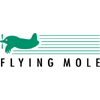
Unless you’ve seen a flying mole, you are aware there’s no such thing (if you did happen to see one, please keep it a secret). Flying Mole, says Jim Johns, “implies accomplishing the impossible through tireless experimentation and a multitude of innovative technologies joined together to create a new type of digital amplifier.” The creators of the Flying Mole Amps are all former Yamaha engineers who were instrumental in Yamaha’s initial exploration of digital amplification throughout the 1980s and ‘90s. Unfortunately, Yamaha was not interested in pursuing the direction that the (now) Flying Mole engineers had hoped for, so they left and founded the Flying Mole Corp. to push the performance envelope for digital amplification.
Flying Mole engineers’ influences are consistent with the prevailing trends in Japanese high-end audio, among which are high-efficiency horn speakers driven by high-purity, low-wattage single-ended tube amplifiers. Flying Mole believes that a sound system must prioritize wide dynamic range, tonal purity, and palpable imaging to faithfully recreate the live musical experience. They realized that due to the proprietary power supply of their digital amps, they could not only increase efficiency but also increase the amp’s dynamic power reserves. Thus, dynamics are much more lifelike, similar to those produced by high-efficiency horn speakers. Furthermore, with the combination of their power supply and digital amplification technology, Flying Mole was able to create a purity of tone and palpability of image that bridges the gap between transistor amps and classic single-ended triodes. Added benefits are that the amps are extremely small and lightweight, yet run very cool since they use so little power. Having achieved their goals of superior sound reproduction, Flying Mole is now focused on implementing their technologies into multiple consumer, professional, and OEM products and applications.
The secret to the Flying Mole’s sound lies not only in its circuit design, but also in the influence behind it. Mole’s engineers are influenced by the single-ended triode amplifier and high-efficiency horn combination that has been in vogue in Japan over the last decade or so. Specifically, the Mole was designed to sound great on a high-efficiency horn speaker, which means it is especially dynamic yet completely non-fatiguing. Like the triode amps, the Mole was designed to have extraordinary palpability and colorful harmonic textures when paired with the right [read: efficient] loudspeaker. In a word, the Mole was designed to sound Organic.
The circuit of the Mole is unique, especially when compared to other digital amps (or quasi-digital amps, since only the Tact Millennium and 2150 amplifiers accept true SPDIF digital inputs that I am aware of). Notably, the Mole DAD-M100 not only features single-bit digital amplification but also incorporates a revolutionary power supply technology. The net result is not only an amplifier that is highly energy-efficient and cool-running, but also one that is more capable of leveraging the full power coming from an electrical outlet. The Mole’s Infinite Power Supply converts the 60 Hz AC sinewave into a more efficient ultra high frequency wave—without having to convert the AC signal to DC. These ultra high frequency AC waves are purported to be much smaller in length, and require much smaller value capacitors and transformers—which creates a much shorter signal path. This high-frequency power is then utilized throughout the circuit to its output. This way, not only is the amp more efficient at its output, but it also requires significantly less energy to produce its output. Since it is using less energy from the AC outlet to produce its wattage and the AC power does not have to be converted to DC, it has greater relative reserves for music’s dynamic peaks, and it can respond to these peaks much quicker. This phenomenon is responsible for the Mole’s lively rhythm and pace, but is especially apparent on deep bass—which typically pushes conventional amp to their limits due the sudden power requirements necessary to reproduce such bass. With the Mole’s Infinite Power Supply, the bass does not stress or even slow the Mole; it easily reproduces the deepest bass with surprising pitch definition, agility, and visceral power.
Prior to CES 2004, both Jim Johns, Flying Mole’s US strategist, and Y. Yamada paid a visit to my New Jersey home, bringing with them their new (D)igital (A)udio (D)river-M100 pro HT monoblock amplifiers. Y. Yamada is their chief designer, and although he could hardly speak English, Johns served as an excellent interpreter, as he speaks fluent Japanese. It’s still a surprise to see these lightweight miniatures in person, since I first witnessed them at last year’s CEDIA, although I didn’t have a chance to hear them, as they only showed a static display. Further, I was not interested in doing a review on these amplifiers because 99.9% of you out there, like me, I’m sure, once you lay your eyes on these amplifiers, you would not believe them capable of performance like your typical good “high-end” amp should. They’re simply too small and lightweight, not to mention their cosmetics are not top tier. The rear features standard binding posts and an IEC plug, which is a common standard found on many mass-marketed products (but don’t laugh, LAMM claims the binding posts are the best available). You can see that no “extra” money was spent unnecessarily on building the chassis. No hard feelings to you folks at Flying Mole, but when you come to the US, be sure to bring something that sports substantial weight. okay? Measuring a mere 8 ¼” long by 5” wide and 1 ¾” tall, I don’t know about you, but you ain’t looking for anything that. I admit, my ego won’t allow it (I had a tough time getting used the lightweight Bel Canto and Tact amps).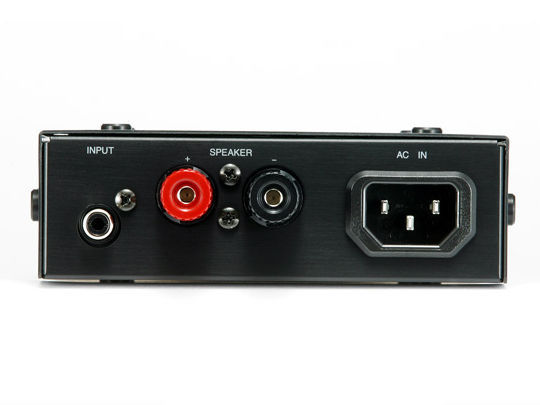
After some ego-inflating exercises, I placed the DAD-M100s with the modestly inefficient (86 dB) ELAC 310 I Jet mini-monitors to put them through an audio stress test. Using a pair of Analysis Plus Oval 8 speaker cables and their interconnects (although banana is the preferred connection), and utilizing the Zanden-modified JubiLaeum CD player, I was immediately impressed with the tonality and harmonic integrity they presented when driven at regular listening levels. I credit this high level of sonic integrity, in part, to the fact that DAD-M100s require no preamp since they have their own volume attenuator and, of course, a super small signal path. There exists a quality and rightness to the sound of these mini-monsters that stood out almost immediately and only became more convincing the more I listened with different components. I believe that rightness that comes from the DAD-M100’s Technology, which employs fewer parts in its signal path, thus these miniature monos have a very high purity quotient.
However, they certainly didn’t like being pushed and began to come apart at the seams, sounding harsh and brittle when they were pushed past their limits. It became apparent that the ELAC’s 86dB efficiency and ribbon tweeter were not too kind on the DAD-M100s due to their uneasy load. Ironically, when strapped to the much larger Isophon Europa, the DAD-M100s seemed to handle this much larger (six drivers per enclosure) loudspeaker like a piece of cake. Go figure.
For example, driving the Isophon Europa, I was surprised to find that these small amps showed greater control and musicality than I could have ever thought possible, given their size and character, when driving the ELACs. Ditto pairing the DAD-M100s with the Xavian Mia mini-monitors. In this configuration, these small two-way speakers seemed like the perfect match for the DAD-M100s. These little Engines that could took the Xavian Mias on a musical ride that no one here believed in at first inspection. Listening to Clark Terry’s SACD hybrid reissue CD, entitled Portraits [Chesky SACD267], gave a glimpse into what this amplifier/loudspeaker was capable of. This quartet’s rendition of “Autumn Leaves” is quite nice and very well recorded here. Sonic spacing is well done in this recording, as with a lot of Chesky CDs, and here is another great illustration of their technique. The DAD-M100s didn’t miss a beat, revealing this disc’s naturally rendered sonic landscape, albeit on a smaller, albeit less wide, soundstage than with the Isophon Europas.
There was never any sense of strain or stridency coming from these super lightweight [ch]amps, which is exactly what I would expect from such a small and lightweight package. Contrarily, the sound remained warm, rich, and detailed, literally mimicking the sound of the larger and more expensive Acoustic Signature monos and Bel Canto eVoII’s residing right next to them. Surprised? Imagine the look on my face.
It has become clear that the DAD-M100s are excellent amplifiers that cater to a niche audience, particularly where space is a premium. Their size-to-power ratio is the highest I’ve seen. I still can’t believe that the DAD-M100s can produce the power and control they remarkably possess WITH THE RIGHT LOUDSPEAKERS. I cannot reiterate the importance of having the right loudspeaker and would hope they will offer a 30-day in-house trial of these amazing miniature transducers. I’ve had the review samples for months, and they still sound as good as when they first arrived. They never get warmer than room temperature and still manage to steal the show whenever I show visitors all the new and exciting digital products slated to make their way into the marketplace.
Since my time with DAD–M100 was positive (except for the poor stress test score when driven hard by the ELAC 310 I JETs), I chose to put them through the paces once again with different reviewers. The next stop for the DAD-M100s was with Regina Carter’s sideman (drummer), musician/audiophile, and ST contributor, Alvester Garnett. His well-documented findings mirrored mine…. (click below).
Manufacturer’s Response
Thank you, Alvester and Clement, for such kind words. We agree with almost everything you said, but some points require clarification from us. The circuit created by Flying Mole is inherently stable and capable of driving loads below half an ohm — if the factory sets it that way. However, for the M100, we instead chose to bias it for optimum sound for the vast majority of speakers–which is 4-8 ohms. So, the net result is that the 100 watts that the M100 produces, along with the quality of those watts, make it ideal for probably more than 90% of the speakers out in the field. Additionally, the low price of the amp makes bi-amplification a realistic option for those who need more power. For those who need even more power, please stay tuned for an upcoming Flying Mole amplifier that will be several hundred watts.
For better or for worse, we have found that the M100 is dramatically affected by line conditioning. Even an inexpensive Monster Cable conditioner can have a dramatic effect on the amp’s performance across the board. We can’t help but wonder how the M100s could have sounded in Alvester’s second system if he had used some line conditioning.
A bit of clarification is necessary; the Flying Mole circuit does convert its power from AC to DC, but your characterization of this complex, proprietary circuit design is otherwise accurate.
It should also be noted that the latest production version of the amplifier features a slight fine-tuning of the circuit design, resulting in even greater image focus within its voluminous soundstage. However, this change does not affect the amplifier’s rich harmonic textures or impactful bass.
What we are most proud of about the M100 is that it provides the best foundation available to build a system around; an audiophile cannot find a higher-performance amp priced appropriately for a budget system. Yet, the amp can hold its own with components at even twenty times its cost. Indeed, most purchasers will never realize the amp’s full potential unless it is heard in systems approaching cost-no-object (kind of like yours, Mr. Perry!)
Gentlemen, thanks again for your kind words.
Jim Johns
Flying Mole USA
| Specifications: Rated output 160-watts / 4 ohm, 100-watts / 8 ohm Frequency Response 5Hz-25kHz / 4 ohm, 5Hz-50kHz / 8 ohm Distortion rate (THD) 0.03% (8 ohm, 1kHz, 50watts), 0.05% (4 ohm, 1kHz, 50watts) S-N ratio 120dB (400Hz-3kHz) Input Impedance 1V/10k ohm Damping Factor 200(8 ohm,1kHz) Power Consumption 20 watts(8 ohm), 30 watts(4 ohm) Stand-by Power 6-watts(no signal input) Power Supply AC120V 60Hz (U,C), AC230V 50Hz (E) Dimensions 130(W) x 210(D) x 41(H) mm / 5.1(W) x 8.3(D) x 1.6(H) in. Weight 650g (3 lb)/pair Price $699.00/pair |
| Address: Address: Flying Mole Corporation Waji-cho 5199-1,Hamamatsu-shi Shizuoka-ken,431-1115 Japan Tel :81-53-486-6030 Fax :81-53-486-6033 http://www.flyingmole.co.jp/index.html U. S. Office: |
![]()
Stereo Times Masthead
Publisher/Founder
Clement Perry
Editor
Dave Thomas
Senior Editors
Frank Alles, Mike Girardi, Russell Lichter, Terry London, Moreno Mitchell, Paul Szabady, Bill Wells, Mike Wright, and Stephen Yan,
Current Contributors
David Abramson, Tim Barrall, Dave Allison, Ron Cook, Lewis Dardick, John Hoffman, Dan Secula, Don Shaulis, Greg Simmons, Eric Teh, Greg Voth, Richard Willie, Ed Van Winkle, Rob Dockery, Richard Doron, and Daveed Turek
Site Management Clement Perry
Ad Designer: Martin Perry


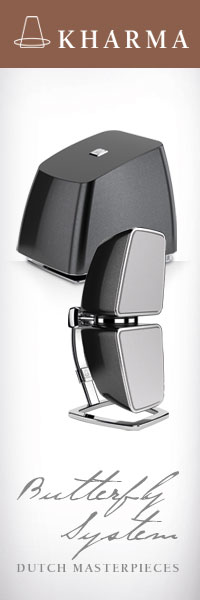

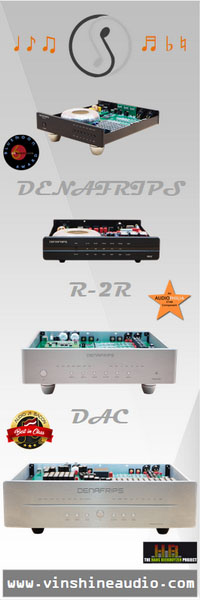
Be the first to comment on: The Flying Mole DAD-M100 pro HT monoblock amplifiers